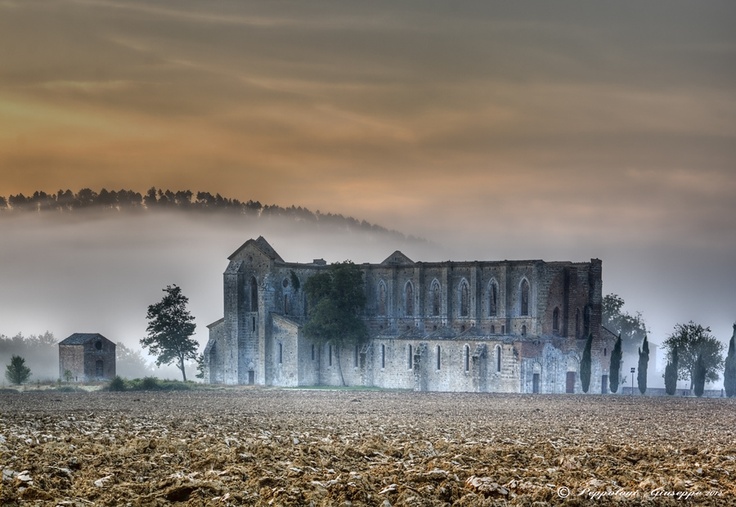Is it a tale? No, it’s true and you can see it in Italy, of course .
Around 1150 in a small village near Siena a boy was born to Guido and Dionisa Guidotti, an affluent family of the local aristocracy; his parents named him Galganoyouth and education instead local chronicles report that he was happy to start the career of arms so, as it was common in the Middle Age within rich and noble families, he became a knight. According to the same chronicles by character Galgano was arrogant and aggressive as well fond of wine and women; in those days they were not uncommon aspects for young warriors but it appears that Heaven had something in store for Galgano who, after years of that behaviour, realised that his lifestyle was leading him nowhere when he twice dreamt Archangel Michael“God’s militias wish and organised for him to become engaged to a noble girl living, like them, in Tuscanys wish, on Christmas Eve 1180 took his horse and left to Civitella castlefamily, to introduce himself to all of them.
In winter the ride to Civitella was not an easy one anyway Galgano took it as an inescapable duty. We can imagine the storm inside Galgano’ soul and how his mood could be anyway what proved to be the solution was just about to happen in fact his horse stopped in the middle of the countryside refusing to move further so Galgano turned back to a nearby abbey where to spend the night . Next morning the horse seemed to be alright so Galgano took off again to Civitella but when he reached exactly the same place where he had to turn back the day before, the horse refused again to proceed. It was so that Galgano prayed God to show him what to do and released the reins loose so that the horse could choose which way to go. Instead of taking the path to Civitella, the horse rode to the nearby top of Montesiepi hill where it stopped. To Galgano the message was clear. He understood that the horse had been guided from above so he dismounted, took his big sword and stuck it into the ground so that the hilt looked like a cross and prayed.
Within few weeks after that Christmas day of 1180 several monks and ordinary people joined Galgano forming a community devoted to prayer. Winter passed and when in spring it was again easy to travel, Galgano went to Rome to plead Pope Alexander III for permit to start a new monks order. While he was away on his trip to Rome three bandits attacked the monks community but they received a tough punishment in fact two of them died on the place (not killed by the monks, of course) whilst a third one escaped but during his run he was attacked by a wolf that severed both his arms. A legend? Apparently not in fact the severed arms are still preserved in a case at the Montesiepi cloister. Regretfully Galgano’ new pious life didn’t last long in fact the same year 1181 he passed away on November 30th. It was then that some people living in the neighborhood reported having experienced miracles done by Galgano; those reports, well supported by evidence, led the Church to pronounce Galgano a Saint just four years after in 1185.
Today it’s possible to visit Montesiepi Chapel, located few hundred meters from San Galgano Cloister, where the Saint’s sword is still stuck into its rock. Worth knowing that the sword has been x-rayed as well as its steel has been examined by experts to check its authenticity; according to those experts it’s made by a kind of steel corresponding to those produced in the XII century whilst the sword shape is according to the medieval swords classification done by Ewart Okeshott, a recognised expert and a consultant to the Royal Armouries of Leeds. After a first vandals attack in 1181 (when the hilt was cracked and, by miracle, reunited to the blade) in 1960 and 1991 two vandals tried to remove the sword from its stone; none of them succeeded but some damage was, of course, done. After those two nasty attacks strict precautions have been taken to protect the Saint’s sword that’s now protected by a plexiglass cover. The abbey that was built up near the chapel where the sword in the stone is preserved is now a ruin though its magnificent gothic architecture is capable of impressing any visitors. Centuries of wars and looting have taken their toll so today just the perimetral walls are standing, nevertheless the looks are breathtaking. During weekends and holidays the whole place is usually crowded with tourists so planning for a weekday visit is the best to enjoy not only the looks but also the atmosphere of a place that’s undoubtedly unique.
More details can be found by visiting:
www.confraternita-sangalgano.it
www.sangalgano.info/index_en.html
Alberto Bertoni
